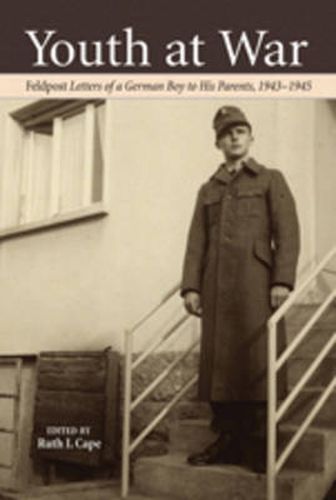Readings Newsletter
Become a Readings Member to make your shopping experience even easier.
Sign in or sign up for free!
You’re not far away from qualifying for FREE standard shipping within Australia
You’ve qualified for FREE standard shipping within Australia
The cart is loading…






This title is printed to order. This book may have been self-published. If so, we cannot guarantee the quality of the content. In the main most books will have gone through the editing process however some may not. We therefore suggest that you be aware of this before ordering this book. If in doubt check either the author or publisher’s details as we are unable to accept any returns unless they are faulty. Please contact us if you have any questions.
Youth at War: Feldpost Letters of a German Boy to His Parents, 1943-1945 is a bilingual (German and English), annotated edition of a large collection of Feldpost letters and postcards written by a German boy between September 1943 and February 1945. Born in 1927, Gerhard G. was one of Germany’s youngest soldiers during the Second World War. He was only fifteen years old when in September 1943 he became a student (Luftwaffenhelfer) in the German Flak, an anti-aircraft gun unit that defended Germany against frequent aerial attacks by the Allied Forces. In July 1944, he was drafted into the R.A.D., a compulsory national labor service for young men and women. Finally, in October 1944, Gerhard joined the German navy (Kriegsmarine), where he served on the pocket battleship Admiral Scheer from January to March 1945. In May 1945, at the age of seventeen, he became an American prisoner of war. Due to his young age, he was released and permitted to return home in August 1945. This collection of one hundred and forty letters and postcards he had mailed to his parents was found in his house, shortly before his death in May 2008, neatly tied together by a string and in chronological order. It represents the large majority, if not all of the correspondence to his family that reached them while he was away from home. Gerhard’s letters give deep insight into many aspects of military and social life during the Second World War, while offering the reader a rare and close look at the war experiences, thoughts, and feelings of an intelligent German boy who, from one day to the next, was made a part of Hitler’s war machine. In combination with photographs and other documents from his childhood, youth, and young adulthood, these letters help reconstruct an interesting piece of German Alltagsgeschichte and can perhaps shed new light on a much-discussed time in German history. The edition, which includes a historical and biographical introduction, is not only a valuable source for scholars and students in various disciplines, but also addresses general readers with an interest in the social history of the Second World War.
$9.00 standard shipping within Australia
FREE standard shipping within Australia for orders over $100.00
Express & International shipping calculated at checkout
This title is printed to order. This book may have been self-published. If so, we cannot guarantee the quality of the content. In the main most books will have gone through the editing process however some may not. We therefore suggest that you be aware of this before ordering this book. If in doubt check either the author or publisher’s details as we are unable to accept any returns unless they are faulty. Please contact us if you have any questions.
Youth at War: Feldpost Letters of a German Boy to His Parents, 1943-1945 is a bilingual (German and English), annotated edition of a large collection of Feldpost letters and postcards written by a German boy between September 1943 and February 1945. Born in 1927, Gerhard G. was one of Germany’s youngest soldiers during the Second World War. He was only fifteen years old when in September 1943 he became a student (Luftwaffenhelfer) in the German Flak, an anti-aircraft gun unit that defended Germany against frequent aerial attacks by the Allied Forces. In July 1944, he was drafted into the R.A.D., a compulsory national labor service for young men and women. Finally, in October 1944, Gerhard joined the German navy (Kriegsmarine), where he served on the pocket battleship Admiral Scheer from January to March 1945. In May 1945, at the age of seventeen, he became an American prisoner of war. Due to his young age, he was released and permitted to return home in August 1945. This collection of one hundred and forty letters and postcards he had mailed to his parents was found in his house, shortly before his death in May 2008, neatly tied together by a string and in chronological order. It represents the large majority, if not all of the correspondence to his family that reached them while he was away from home. Gerhard’s letters give deep insight into many aspects of military and social life during the Second World War, while offering the reader a rare and close look at the war experiences, thoughts, and feelings of an intelligent German boy who, from one day to the next, was made a part of Hitler’s war machine. In combination with photographs and other documents from his childhood, youth, and young adulthood, these letters help reconstruct an interesting piece of German Alltagsgeschichte and can perhaps shed new light on a much-discussed time in German history. The edition, which includes a historical and biographical introduction, is not only a valuable source for scholars and students in various disciplines, but also addresses general readers with an interest in the social history of the Second World War.